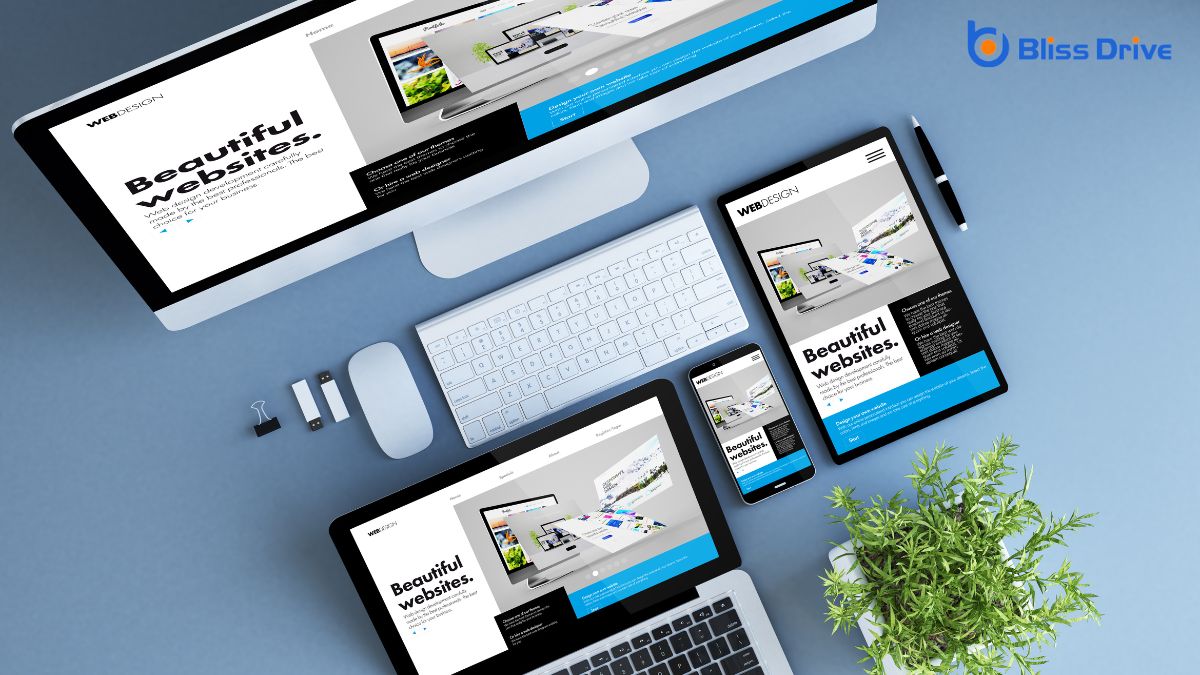Learn More About Us

In SEO-friendly UX, navigation design is key. It organizes content logically, guiding users seamlessly through your site. With clear, concise labels, users know where each link leads. A simple, mobile-responsive navigation enhances accessibility across all devices. This boosts user experience and keeps them engaged, which search engines love. Intuitive menus reduce bounce rates and improve indexingThe process of adding web pages into a search engine's database., positively impacting search rankingsThe position at which a website appears in the SERP.. There's even more to discover about navigation's role in SEO and user experience.

Navigation design is an essential element that guides users through your website, guaranteeing a seamless and intuitive experience. When you craft your website’s navigation, think of it as a roadmap that helps visitors find what they're looking for quickly.
Start by organizing content logically and grouping similar topics together. Use clear, concise labels for menu items so users know exactly where each link will take them. It’s vital to keep navigation simple, avoiding clutter that can overwhelm users.
Prioritize key pages in your navigation structure, making sure they're easily accessible. Don’t forget about mobile users; confirm your navigation is responsive and touch-friendly.
Consistency is key—keep the same navigation elements across all pages, so users always know where they are. Remember, effective navigation design enhances user satisfaction and engagement.
When done right, a well-designed navigation system greatly enhances the user experience on your website. It allows visitors to find information quickly, reducing frustration and encouraging longer visits.
Picture yourself landing on a website with clear, intuitive menus that guide you effortlessly. You feel more compelled to explore, right? That’s the power of good navigation.
A seamless navigation system anticipates your needs, prioritizing clarity and simplicity. It organizes content logically, making it easy for you to locate key sections without getting lost.
Responsive designA web design approach that makes web pages render well on a variety of devices and window or screen ... guarantees accessibility across devices, improving your experience whether you’re on a desktop or smartphone. Ultimately, user-friendly navigation builds trust and encourages return visits.
Although often overlooked, a well-structured navigation system plays an essential role in influencing search engine rankings. Your site's navigation affects crawlability, meaning search engines can better understand and index your content.
When navigation is clear and intuitive, it boosts SEO in several key ways:
A strategic approach to navigation not only enhances user experience but also greatly improves your site's SEO performance.
Building on the understanding of how navigation influences search engine rankings, it's important to focus on crafting an SEO-friendly navigation system.
Start by keeping your navigation simple and intuitive. Use descriptive labels that accurately represent the content, helping both users and search engines understand your site’s structure. Guarantee your navigation is consistent across all pages, maintaining a familiar path for visitors.
Incorporate a clear hierarchy, prioritizing essential links and utilizing submenus appropriately. Keep URLs clean and readable, avoiding unnecessary characters.
Don’t forget about mobile-friendly design—make sure navigation adapts seamlessly to smaller screens.
Finally, use internal linking wisely to guide users through relevant content, improving engagement and signaling content relationships to search engines.

Even with the best intentions, navigation design missteps can sabotage your site's usability and SEO efforts.
Avoiding common pitfalls is key to maintaining an intuitive user experience and optimizing search engine visibility. Here are three mistakes you should steer clear of:
In crafting an SEO-friendly user experience, you play a pivotal role by focusing on effective navigation design. By understanding its basics, you enhance user experience and influence search engine rankings positively. Implementing best practices while avoiding common mistakes guarantees your site's navigation is intuitive and accessible. This not only keeps users engaged but also improves your site's visibility. Remember, your thoughtful navigation design is key to bridging user satisfaction and search engine success.
